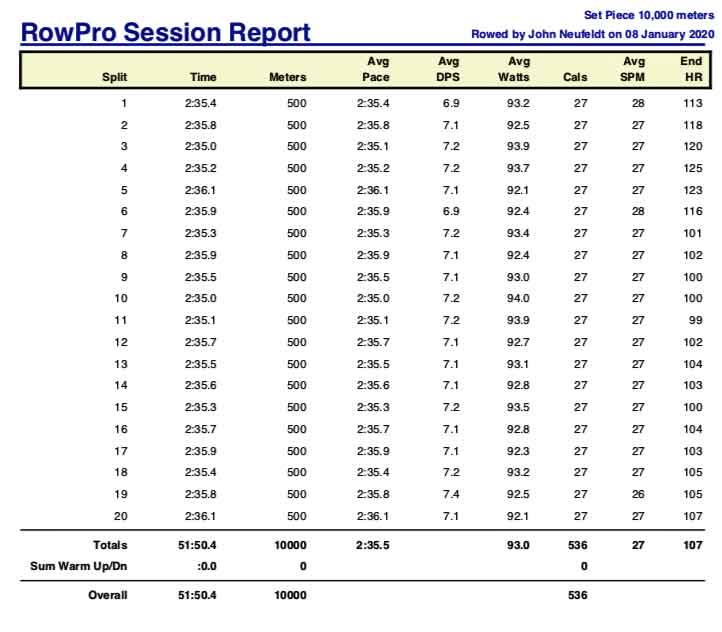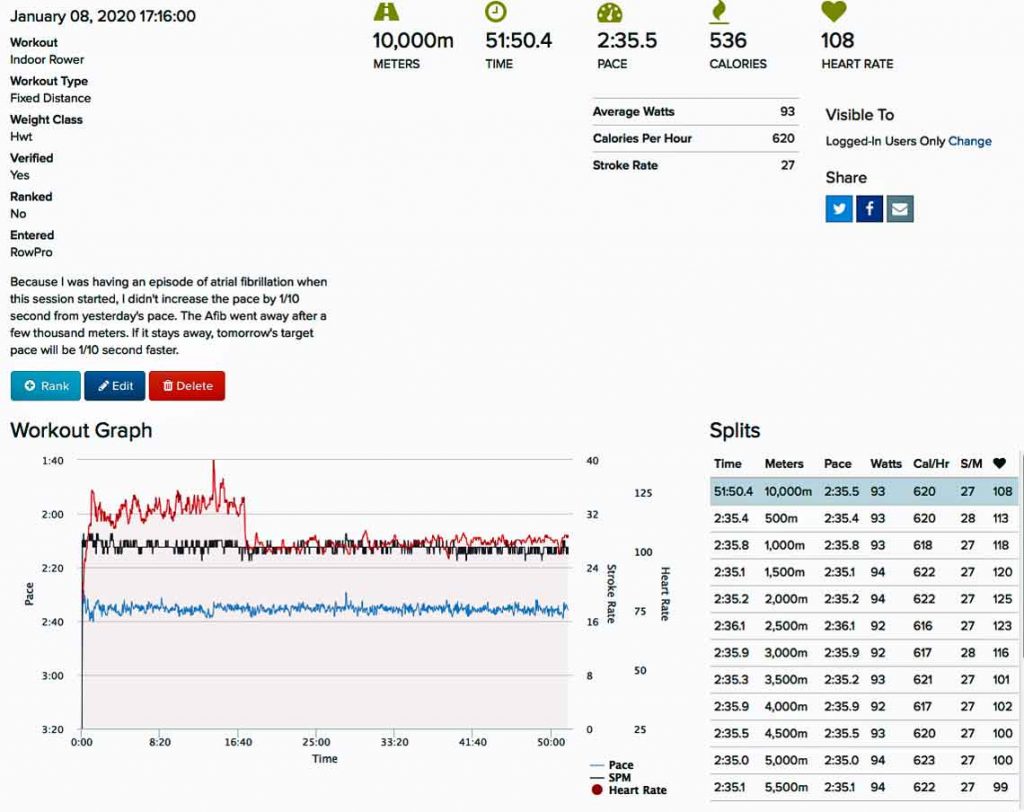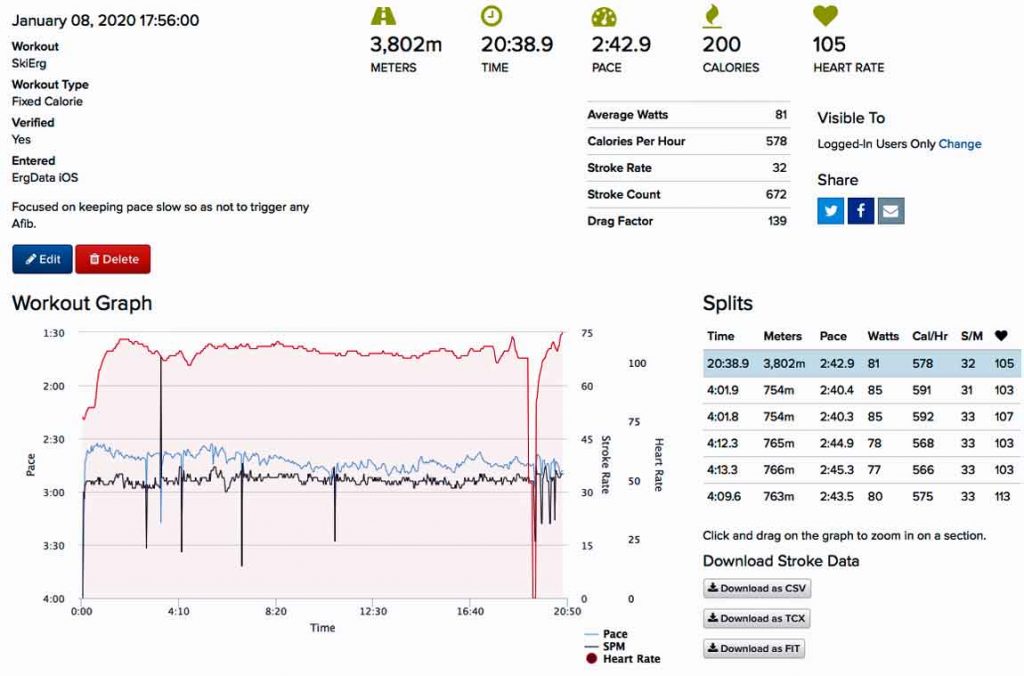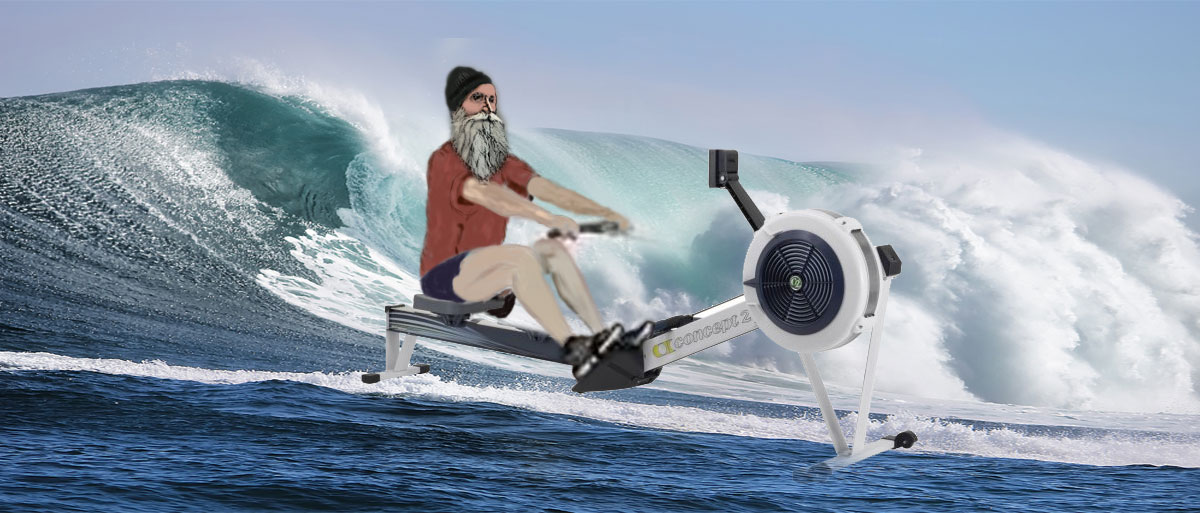
It’s been a long while since anything has been posted to this blog because though I’ve continued doing daily rowing and cross-country ski workouts, enthusiasm for blogging has greatly waned.
There have been many, many episodes of atrial fibrillation which have interfered with sleep and hampered working out at any sort of vigorous speed.
After a few too many days spoiled by atrial fibrillation, on the last day of 2019 I adopted the current approach to daily workouts:
On December 31st I was experiencing no atrial fibrillation before doing any workout. From past experience, it seemed that Afib would frequently be triggered by indulging in rowing hard or sprinting. So on Dec 31st I decided to try exploring how fast and hard I could row without triggering atrial fibrillation. My approach was to focus on heart rate that day and try to maintain heart rate at the very low rate of 100 BPM for 10,000 meters.
After that 10K was completed I noted what the average pace had been and rowed at a slightly faster average pace target for the next day’s 10,000 meters on the first day of 2020.
On January 2nd and each day from then until now, I’ve increased the pace by 1/10 second/500 meters faster than the day before, while carefully watching heart rate during each day’s 10,000 meter rowing session. If atrial fibrillation develops during any of those sessions or is happening when it is time for the next day’s 10K, then the target pace for the next day is not increased. But if there is no Afib connected with or following each day’s 10K, then the pace the next day will be increased by that 1/10th second per 500 meters.
Hopefully, this will have a positive effect on whatever has been messing up the heart rhythm.
Atrial fibrillation started during the last part of yesterday’s workouts and continued all night and was still doing its flutter-flutter dance in the chest at the start of today’s workouts, so pace for today’s 10,000 meter session was not increased. After about 17 minutes of today’s 10K, the atrial fibrillation disappeared, heart rate settled down to normal and remained normal for the rest of the 10K rowing session and for the approximately 20 minutes of workout on the SkiErg which immediately followed the rowing.
If I don’t post every day or even every month, don’t be surprised because with no evidence of or interaction with an audience of even one, I have almost no motivation to continue spending time with this blog.
Here are screenshots for today’s workouts:




Happy rowing to you, whether you have an audience or are all alone in your endeavors on the erg!
